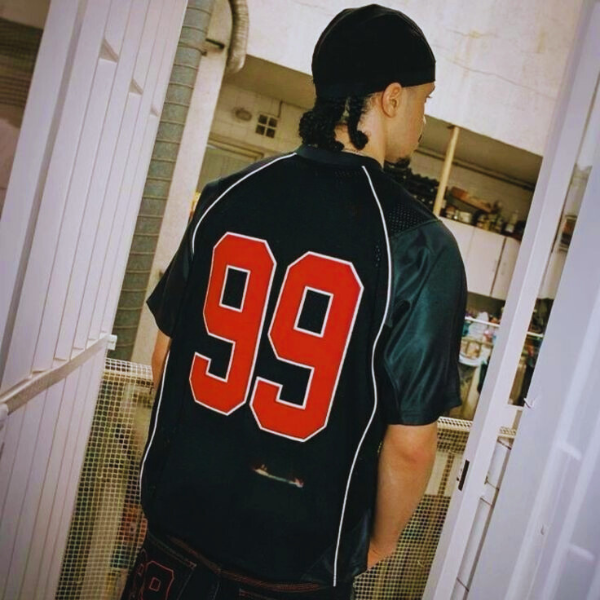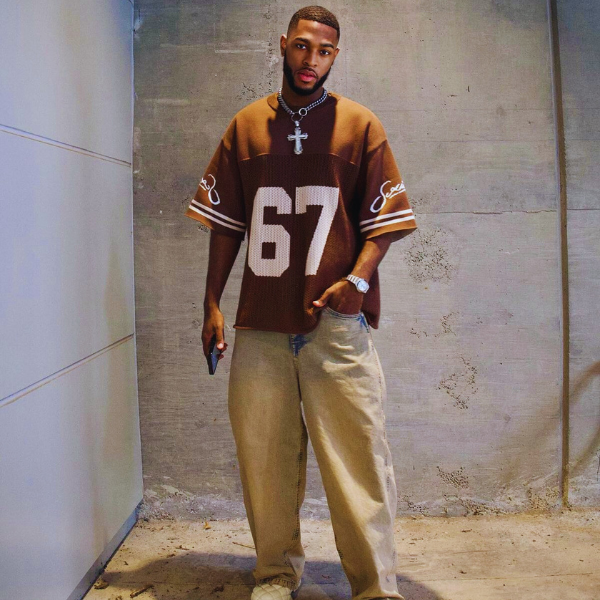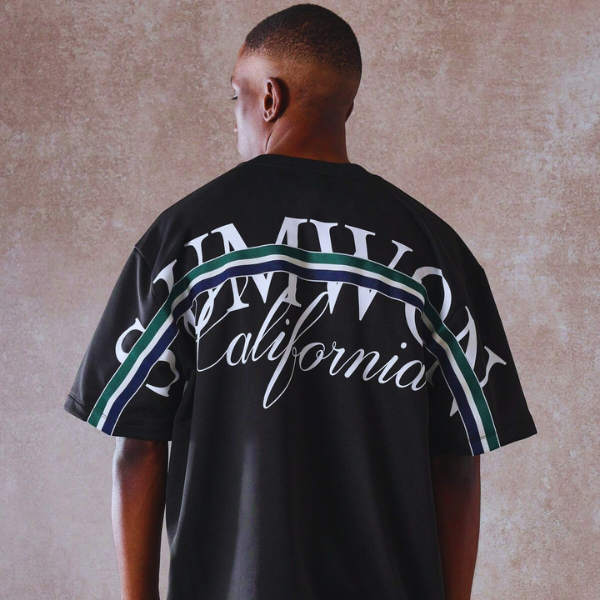In the ever-evolving world of fashion, where trends shift swiftly and styles constantly morph, certain fabrics maintain a consistent and irreplaceable presence. Among these, jersey stands out not only for its tactile comfort but also for its versatility, cultural relevance, and enduring place in both high fashion and streetwear. Originally associated with sportswear and casual attire, jersey has transcended its athletic roots to become a fabric embraced by designers, influencers, and everyday fashion enthusiasts around the globe. As modern fashion increasingly values comfort, adaptability, and personal expression, jersey has evolved into an iconic staple, representing a unique intersection of function, identity, and innovation.
Jersey fabric was first produced on the island of Jersey, one of the Channel Islands between England and France, long before it gained international fame. Historically, it was used for men’s undergarments due to its softness and ability to stretch, but its true ascent in the fashion world began in the early twentieth century. The legendary Coco Chanel played a significant role in transforming jersey from a utilitarian textile into a desirable material for women’s fashion. Chanel’s revolutionary designs introduced jersey dresses and blouses that emphasized movement and ease, challenging the stiffness of earlier, more restrictive garments. From that point onward, jersey began to take on new meanings within fashion, reflecting modernity, practicality, and understated elegance.
One of the key reasons jersey remains relevant today is its adaptability across a wide range of fashion styles. The fabric’s inherent flexibility and softness make it ideal for various garments, from basic T-shirts and bodycon dresses to draped gowns and athletic jerseys. Unlike woven fabrics that may wrinkle or restrict movement, jersey’s knit structure allows it to contour to the body, offering both comfort and a flattering silhouette. This unique combination of traits makes jersey a favorite among designers seeking to marry comfort with contemporary style. High-end labels such as Alexander Wang, Rick Owens, and Balenciaga frequently incorporate jersey into their collections, proving that the fabric is not confined to casual wear but can be elevated to the runway with the right vision.
Jersey’s association with sports has also played a central role in shaping its cultural identity. Athletic jerseys, in particular, have evolved from mere team uniforms to powerful symbols of loyalty, identity, and style. In basketball, soccer, and American football, fans proudly wear the jerseys of their favorite athletes, creating a shared visual language that transcends geography and background. These garments are no longer worn only in stadiums or gyms; they have made their way into everyday fashion, streetwear, and even luxury wardrobes. The rise of athleisure as a dominant fashion trend further underscores jersey’s prominence, as consumers increasingly seek garments that balance performance with street-savvy appeal.
Hip-hop culture has been instrumental in catapulting jersey fashion into the mainstream. In the 1990s and early 2000s, hip-hop artists popularized oversized basketball jerseys, pairing them with baggy jeans, snapback caps, and heavy sneakers. These looks were not just fashion statements but declarations of cultural identity, rooted in urban aesthetics and personal expression. Jersey garments became a canvas for representing one’s favorite team, hometown, or personal style. As hip-hop and streetwear began to influence high fashion, luxury brands took note, incorporating sportswear elements and jersey silhouettes into their collections. Collaborations between brands like Nike and Off-White or Adidas and Gucci illustrate how jersey pieces can bridge the gap between athletic authenticity and designer prestige.
Beyond the realm of streetwear and sports, jersey has also found a home in gender-fluid and inclusive fashion. The fabric’s natural stretch and comfort make it ideal for designs that defy rigid sizing or traditional gender categories. Designers who focus on inclusive fashion often turn to jersey for its ability to accommodate diverse body types without sacrificing aesthetics. In a fashion landscape that increasingly values body positivity and fluid identity, jersey provides a medium through which designers can express freedom, softness, and strength simultaneously. The democratizing quality of jersey lies in its universality; it is worn by people of all ages, backgrounds, and identities, and it does not demand conformity to conventional fashion standards.
In terms of sustainability, jersey’s resurgence has also aligned with efforts to make fashion more environmentally conscious. With the rise of organic cotton, bamboo, and recycled polyester jerseys, the fabric is being reimagined for a greener future. Brands are experimenting with eco-friendly dyes, low-impact production methods, and ethical labor practices, ensuring that jersey can meet the demands of conscious consumers. As fast fashion comes under greater scrutiny for its environmental toll, jersey offers an opportunity for sustainable basics and essentials that are both stylish and responsible. Additionally, the durability of jersey fabric means that garments made from it are likely to last longer and resist wear, promoting a culture of slow fashion and mindful consumption.
The popularity of jersey is not solely due to its material properties but also its emotional resonance with wearers. Jersey garments often become wardrobe favorites because they are easy to wear, easy to care for, and suitable for a wide range of occasions. A jersey dress might be worn to a casual brunch, a relaxed office, or a summer wedding, depending on how it is styled. Similarly, a jersey hoodie may accompany someone through travel, leisure, and everyday errands. These garments are not merely clothing; they become part of the wearer’s daily rhythm, offering a sense of familiarity, warmth, and ease. In this way, jersey fashion becomes deeply personal, carrying memories, moods, and moments within its soft folds.
Design innovation continues to expand what is possible with jersey. New blends and treatments have given rise to moisture-wicking, anti-bacterial, and thermal-regulating jerseys, broadening their appeal in both activewear and loungewear markets. These technological advancements are especially relevant in a post-pandemic world where comfort and health have become paramount in fashion. As people prioritize clothes that support wellness and adaptability, jersey remains a leading choice for fashion that aligns with the rhythms of modern life. Moreover, the integration of digital printing and laser cutting allows designers to experiment with bold graphics, textures, and shapes on jersey, pushing its aesthetic boundaries even further.
Celebrity influence has also kept jersey fashion in the public eye. From Rihanna’s reimagining of sports jerseys into high-fashion looks to Kanye West’s Yeezy collections filled with jersey essentials, pop culture icons continuously reaffirm the fabric’s relevance. Social media further amplifies these trends, with influencers showcasing jersey outfits that blend comfort with cutting-edge style. As these digital platforms increasingly drive fashion trends, jersey’s adaptability makes it the perfect canvas for experimentation, whether through DIY customizations, stylized layering, or minimalist monochrome ensembles. This interactive nature of jersey fashion invites participation from the wearer, allowing them to shape how the fabric is seen and understood in contemporary culture.
Despite its widespread popularity, jersey fashion is not without challenges. As demand increases, concerns about overproduction, synthetic blends, and waste must be addressed. While jersey garments are often affordable and accessible, this can also lead to overconsumption if not balanced with mindful purchasing habits. Fashion brands, manufacturers, and consumers must work collaboratively to ensure that the future of jersey remains sustainable and equitable. This includes investing in circular fashion models, where old jersey garments are repurposed, recycled, or upcycled into new creations, extending their life cycle and reducing environmental harm.
Looking forward, the future of jersey fashion appears bright, dynamic, and multifaceted. Its ability to merge comfort, identity, and innovation ensures that it will continue to evolve alongside the needs and desires of modern consumers. As fashion becomes increasingly inclusive, adaptive, and technologically enhanced, jersey will remain a foundational element in shaping how people dress, feel, and express themselves. Whether worn on the runway, the street, or the sofa, jersey’s enduring appeal lies in its capacity to adapt to context while maintaining a sense of authenticity and ease.
Jersey fashion, in all its forms, tells a story of transformation. It reflects how fashion can be both personal and collective, practical and artistic, traditional and revolutionary. In every stitch of a jersey shirt, in every drape of a jersey gown, in every team number or printed name, there is a narrative of comfort meeting culture, simplicity meeting style. As long as fashion continues to embrace change and challenge convention, jersey will remain not just a fabric but a symbol of fashion’s ever-beating heart.



